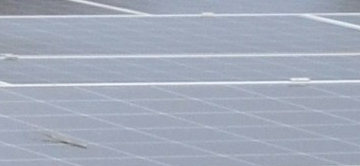The 21st Conference of the Parties on the United Nations Framework Convention on Climate Change 2015, better known as COP 21, was held in Paris between 30 November and 12 December 2015. Forty thousand people participated in this diplomatic and media focused event, which culminated in a document being signed by 195 countries to remind us that the planet is getting warmer. So what?
1. "Houston, we have a problem" (Apollo 13)
COP 21 ended a little over a month ago.
After this solemn and enthusiastic commitment was made to deal with the very serious and urgent problem of climate change, we expected signatories to mobilise public opinion and voters in order to announce radical measures implementing the proposals made during the preparation stage.
This hasn't been the case. As we might have expected, the local and short-term agenda has reasserted itself. In line with the free-rider principle ("Why should I pay when others can pay for me?") and Juncker's line ("We all know what to do. We just don't know how to get re-elected after we've done it."), everyone relies on everyone else to make an individual effort, leading to the collective benefit of control over climate change.
We are so far from finding a solution that, on 12 January during his State of the Union address, the president of the "strongest, most durable economy in the world" attempted to convince his Republican opponents that climate change IS a problem (Republicans who may well take control of the White House in January 2017). In fact, President Obama's address revealed the real nature of the Paris agreement: a reminder of the fact that we are facing a very serious problem with our planet. But we have a long way to go until we find a solution.
2."Diplomacy is the art of telling people to go to hell in such a way that they ask for directions." (W.S. Churchill)
If diplomacy is the art of baby steps and things left unsaid, the Paris agreement was a major diplomatic success. How can we not agree with statements such as:
"The Parties to this Convention...,
Acknowledging that change in the Earth's climate and its adverse effects are a common concern of humankind,
Concerned that human activities have been substantially increasing the atmospheric concentrations of greenhouse gases, that these increases enhance the natural greenhouse effect, and that this will result on average in an additional warming of the Earth's surface and atmosphere and may adversely affect natural ecosystems and humankind, ...,
Determined to protect the climate system for present and future generations,
Have agreed as follows: ..."
Unless you're a climate change sceptic, you can't disagree with these concerns. Yes, but these lines weren't taken from the COP 21 resolution. They are taken from the United Nations Framework Convention on Climate Change, dated 1992.
In fact, the Paris agreement is that and only that: a reminder, with some minor changes, of a problem which was identified a quarter of a century ago. With the reminder given, we are rushing to think about something else.
Of course, promises were made during COP 21's preliminary stage, good intentions known as INDC (Intended Nationally Determined Contributions).[1] In reality, they have no commitment value. From a procedural standpoint, it was like a Carbonics Anonymous meeting: "I'll quit tomorrow."
3. "There's no such thing as a free lunch" (V. Pareto)
During the Rio conference in 1992, a radical paradigm shift took place. Until then, the main obstacle to development was the growing scarcity, followed by the inevitable exhaustion, of fossil fuels. Slowly, the idea started to take hold that the real scarcity is the environment's ability to process our waste, specifically the atmosphere's ability to absorb our greenhouse gas emissions.
The concept lacking in the COP 21 text is the explicit recognition of the economic side of the problem, and the resulting solution: as our environment is a rare resource, its use has a cost and therefore users must pay for it.
And because the emission of a tonne of greenhouse gases increases the stock of atmospheric gases which are responsible for global warming in the same way, wherever, whenever and however they are emitted, because every tonne emitted causes the same environmental damage, a unique global price per tonne of greenhouse gases is needed as a reference for public and private agents for their investment, production and consumption-based decisions.
The price for using the environment can be set by the authorities or by market systems. But States object to the idea of a price to be paid for the use of the environment, even though most developed economies have enshrined the 'polluter pays' principle in their legislation.
4. "Two is too much” (Folk wisdom)
The paradox is that whilst the COP did not want an explicit carbon price, it has in fact approved the creation or renewal of thousands of implicit prices. Economics show that any binding public policy measure lead to an effect on the economy which is measured by a dual value or 'shadow price'. Each measure that will be taken by the States participating in COP 21 will generate its own price, with the economic disadvantage but political advantage of remaining hidden. It's only through the painstaking work of a few researchers that information on waste created will be made visible.
For example, in Germany for the 2006-2010 period, Marcantonini and Ellerman (MIT) evaluated the abatement cost per tonne of CO2 at €43 for wind farms and at €537 for solar panels.[2] At the same time, on the European emissions trading market (EU-ETS), a tonne of CO2 traded (without being hidden) at less than €10. This combination of technologies is completely inefficient.
Indeed, because the aim is to reduce greenhouse gas emissions, because all countries are affected, and because all countries have financial problems, we must combine all available techniques in order to reduce the cost associated with a fixed annual volume of emissions. The inevitable result of this improvement is that all technologies must be applied until their marginal contributions are equal. With the implicit prices calculated above for German wind and solar energy, which are very different and also different from the explicit EU-ETS price, we are very wide of the mark. In other words, these uncoordinated policies, based on national and regional initiatives, impose an exorbitant additional cost on the public; in France, we finance it through the Contribution to the Public Electricity Service.
We must set a reference value for greenhouse gas emissions, a value variable over time to take account of the effect of atmospheric accumulation. When comparing the taxation method and the market price method, we prefer the market price method.
Indeed, a Pigovian tax which exactly covers the environmental damage caused is very complicated to calculate and likely to contain many errors. Furthermore, there are various opportunities for it to be manipulated by the authorities.
Within the market solution, the emission permit supply can be calculated using information provided by the Intergovernmental Panel on Climate Change. Demanders of permits are installation operators with capped emissions. It can potentially be manipulated politically, but it is harder to hide.
As with tangible assets (property, land, machines), financial assets (shares, bonds, options) and intangible assets (patents, author rights, the radio spectrum), the creation of tradeable rights leads to the efficient allocation of rare resources. Problems with fairness can be controlled by the initial allocation of rights and redistribution of income, but not through price manipulation.
------------------------------------------------------
In sum:
as French citizens and as citizens of the world, we are happy that diplomats from nearly every country were able to finalise a text bearing their signature;
as economists, we remain as pessimistic as we were before the conference, as the text signed does not seem to contain any kind of solution to the challenge of a growing population which is increasingly demanding, in an environment unable to supply the required resources or absorb the gas, liquid or material waste produced.
[1] You can read them at http://diplomatie.gouv.fr/fr/politique-etrangere-de-la-france/climat/paris-2015-cop21/les-contributions-nationales-pour-la-cop-21/article/cop21-la-carte-des-contributions-nationales.
[2] Marcantonini and Ellerman (2013) “The Cost of Abating CO2 Emissions by Renewable Energy Incentives in Germany”, MIT CEEPR 2013-005, http://web.mit.edu/ceepr/www/publications/workingpapers/2013-005.pdf





